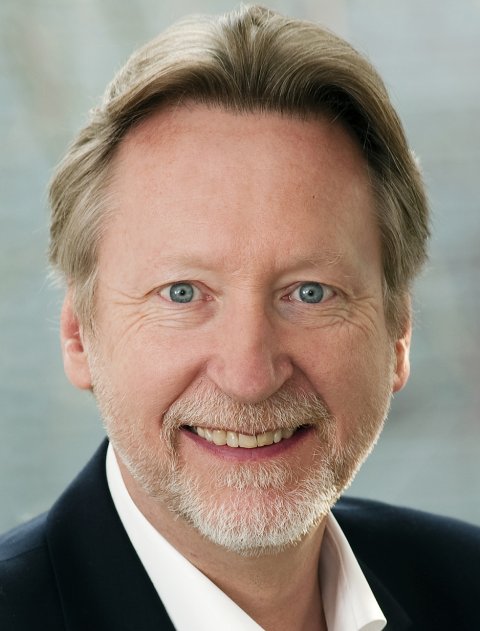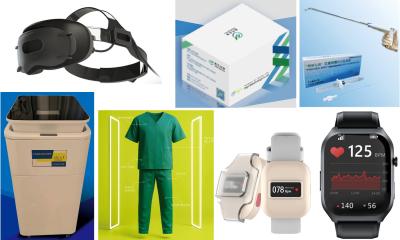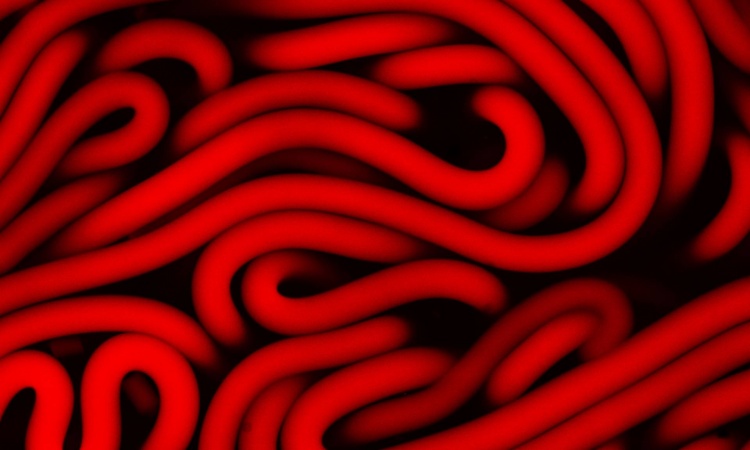Article • Wound care
Healing helped by fish skin or bio-ink
Many methods to treat current or chronic wounds are available. However, the differences in general conditions prevailing in hospital, or for out-patient care, make effective therapy more difficult.
Report: Anja Behringer

Each patient also has other preconditions for healing. Improved communication between everyone involved in the treatment would benefit patients. We see a lot of progress with the issue of “wounds”, physician Professor Bert Reichert explained, ‘but also simply insurmountable obstacles.’ Reichert, who is medical director of the Clinic for Plastic, Reconstructive and Hand Surgery, Centre for Serious Burn Victims at the Paracelsus Private Medical University hospital in Nuremberg, heads the conference at the 1st Nuremberg Wound Congress. For him, it is particularly important that not only the medical specialties but the various professional groups who deal with wound care are brought together so that each can develop a precise notion of what the others actually do with a patient.
When looking at the seemingly expensive modern methods one ought not to forget that classical bandage changes occur more frequently and therefore a longer healing time also induces considerable costs
Bert Reichert
Wound applications made with fish skin, cold plasma, and stem cells from perspiratory glands – what really helps with open wounds? 40,000 amputations annually result from chronic wounds that just won’t heal despite complex, interdisciplinary therapy. The body is unable to close them after months or even years. Such permanently open areas are usually caused by diseased veins and arteries, diabetes or tumours. Pain, itching, moisture and unpleasant odours enormously restrict the life quality of those affected. Innovative therapeutic approaches include obtaining stem cells from the patient’s own fat or perspiratory glands in underarm skin, and a vacuum sealing therapy in which fluid is sucked from airtight packed open wounds, thus promoting the circulation in the surrounding tissue and stimulating skin growth. Cold atmospheric plasma, an ionised gas, can favour wound healing by substantially reducing even multi-resistant pathogens.

An acellular matrix made of fish skin is considered a new generation among wound applications, which, in first use, has even healed treatment-resistant wounds. The product is obtained from the skin of the Atlantic cod, or its subspecies, found north of Iceland. With the animal cells removed, the tissue matrix is placed on the open area, where it forms a mesh along which human skin cells can locate, divide and grow. Finally, a functional, vital tissue is created here. Additionally, omega 3 fatty acids contained in the fish skin appear to favour wound healing. Their infection-impeding, antibacterial and antiviral effects have been proved in the laboratory. Thus amazing successes with it have been achieved recently in clinics. In clinical studies the method is has proved its quality and effectiveness, and even superiority compared to common wound applications. ‘When looking at the seemingly expensive modern methods,’ Reichert observed, ‘one ought not to forget that classical bandage changes occur more frequently and therefore a longer healing time also induces considerable costs.’ Also among much discussed alternatives for chronic wound treatment are transplant materials made of animal tissue, which, as new generation wound applications, might enrich the sometimes-confusing market.
Finally, physicians in Spain are raising eyebrows among specialists with the bio-ink from the 3-D printer. The so-called bio-printer can form new tissue with its ink containing collages and fibrin, thus closing even deep wounds. Such a 3-D print treatment ought not take more than two minutes. ‘Innovations always stimulate curiosity;’ the Nuremberg wound specialist said, ‘because, until now, it’s been impossible to heal patients with chronic wounds completely, even if alternative methods at least bring relief.’

The first Nuremberg Wound Congress
With the Nuremberg Wound Congress, Reichert hopes to draw on past traditions. Similar events have been held in the South German region in previous years, but recently have been absent. The subject ‘wound’ is far too important in his opinion not to seek exchange with adjacent disciplines, beyond the techniques of one’s own specialty, and to continue education. There has been no trans-regional forum beyond isolated regional initiatives.
Progress can be seen in the most diverse range of wound treatment, as well as in the qualification of medical specialist professions ad efforts to develop guidelines. In contrast everyday experience impedes unabated the fact that there are completely different framework conditions for treatment of people in hospital and out-patient care. Thus, for instance, forms of wound treatment commenced in a hospital often cannot be continued as an out-patient by consulting physicians. Add to that the differences between the patients insured by the state and those insured privately. In the state health insurance plan, the efficiency rule applies, which always asks: what is necessary, appropriate and economical? Speaking of negative pressure therapy, Reichert explained: ‘There are institutes that test whether a treatment method is so convincing that one cannot deny it to the patient, and health insurers are obliged to absorb the costs. For decades these investigations are unanswered, for example for negative pressure therapy, because the research study situation is difficult. ‘On the other hand, we know that in hospital, simply from experience, how good the treatment is. And we would want to have it for patients in the out-patient segment. However this is only possible as an exception after case-by-case review.’
The Wound Board at the hospital’s Wound Centre deals with these problems in regular discussions, following the precedent of the interdisciplinary tumour board. It is unusual, but of decisive importance to ask dermatologists, vascular surgeons, trauma surgeons or plastic surgeons to give advice on wound treatment.
Age is a risk factor
Age is the largest risk factor for chronic wounds. Four million people in Germany suffer today from such wounds and there will be more in the future. Health and youth is a transitory condition. Therefore preventive education is necessary about which illnesses, for example, can be avoided by proper diet and exercise.
Diabetes patients need nutrition advice as well as training about how to avoid injuries to the feet through minor injuries due to loss of sensitivity and thus prevent serious complications such as amputations. Sick people with chronic wounds have to learn to care for themselves, which is why wound treatment needs more education and public attention in all its aspects.
Profile:
Professor Bert Reichert, who gained his doctorate in 1984, was appointed chief physician of the Clinic for Plastic, Reconstructive and Hand Surgery, Centre for Serious Burn Victims at the Paracelsus Private Medical University, Nuremberg, in 2004. At the same time as he began his professorship there, in 2014 he became director of the university hospital.
06.02.2019





